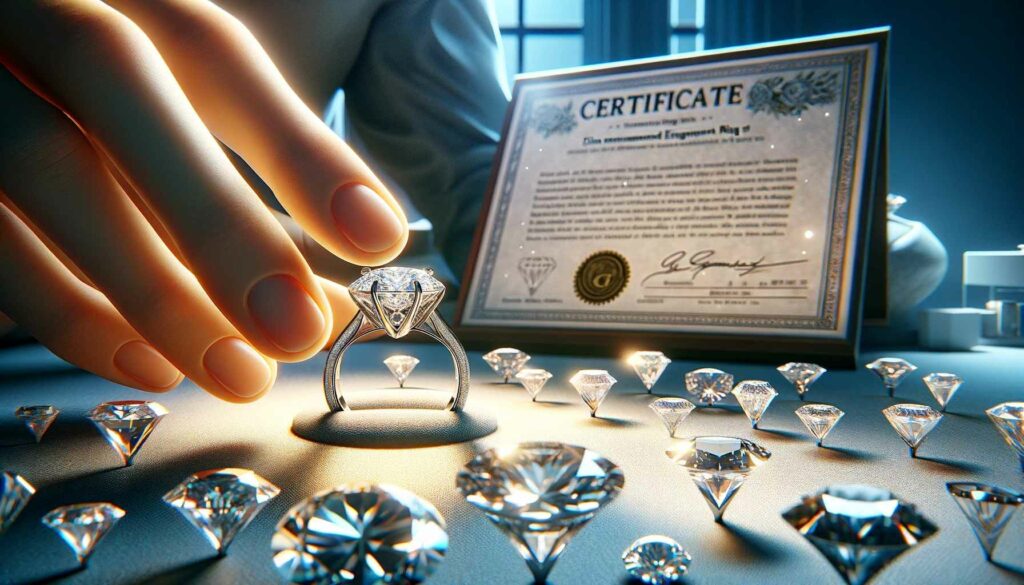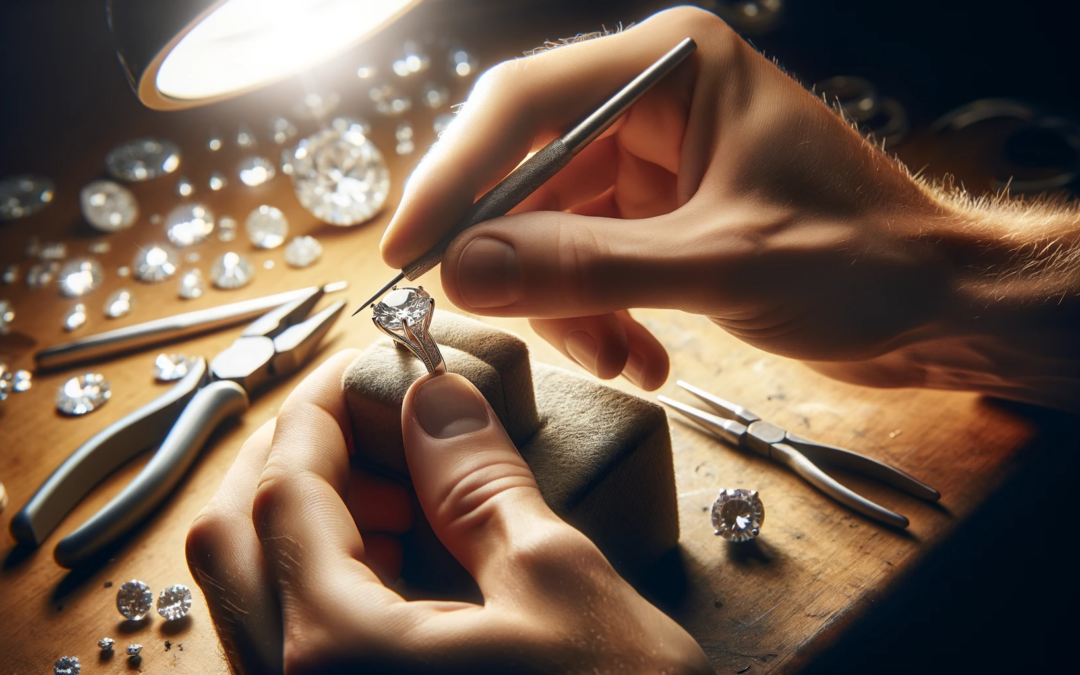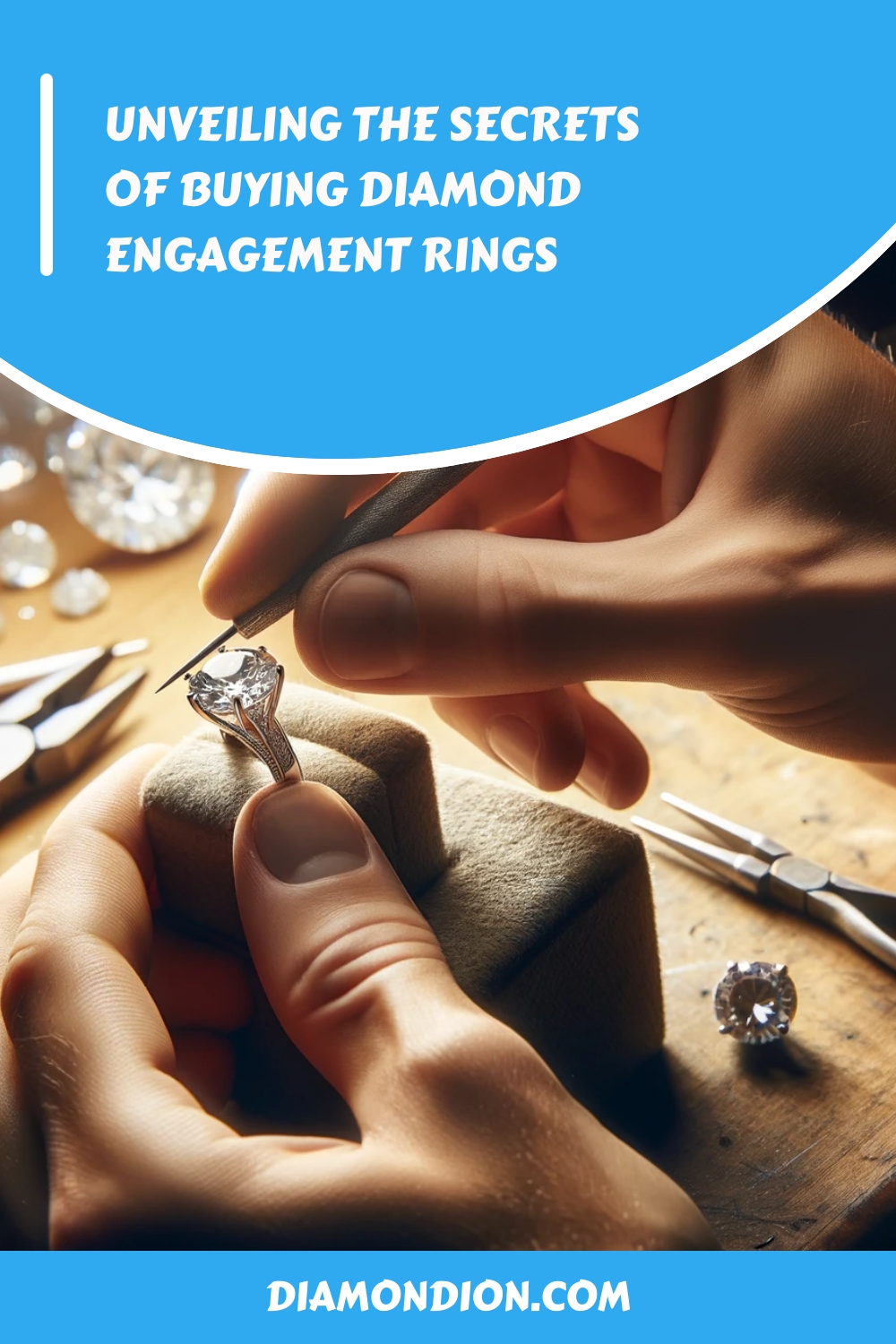Article Contents
- 1 Key Takeaways About Buying Diamond Engagement Rings
- 2 The Significance of Diamond Engagement Rings
- 3 Understanding the Four Cs of Diamonds
- 4 Setting a Realistic Budget
- 5 Considering Carat Weight and Size
- 6 Evaluating Clarity and Color
- 7 The Importance of Cut and Certification
- 8 Tips for Selecting the Perfect Diamond
- 9 Finalizing the Purchase and Ensuring Quality
Coinciding with the thrill of embarking on a lifelong journey, buying diamond engagement rings is an endeavor steeped in symbolism and significance.
Unveiling the intricacies of this timeless tradition, this article offers a comprehensive guide to navigating the world of diamond engagement rings. For those on a budget, affordable diamond rings can be a great option without sacrificing quality or style. From understanding the 4 C’s (cut, color, clarity, and carat) to exploring different ring settings and styles, this guide covers everything you need to know to make an informed decision when selecting the perfect diamond engagement ring. Whether you’re shopping for yourself or looking to surprise your partner, this article will provide valuable insight and practical advice to help you find the ring of your dreams.
From understanding the four Cs of diamond quality to setting a realistic budget, this exploration illuminates the secrets of selecting a ring that embodies both the beauty of the moment and the enduring commitment it represents. From understanding the four Cs of diamond quality to setting a realistic budget, this exploration illuminates the secrets of selecting a ring that embodies both the beauty of the moment and the enduring commitment it represents. By focusing on craftsmanship, authenticity, and personalization, the process of choosing a ring becomes a memorable and meaningful experience. The Kesslers Diamonds store concept amplifies this journey, offering a welcoming environment where customers can learn, explore, and find a perfect symbol of their love story.
Key Takeaways About Buying Diamond Engagement Rings
- The diamond represents a lifetime commitment and should be beautiful and timeless.
- The diamond’s significance lies in its cost and can be intimidating to buy without gemological knowledge.
- It is important to set a budget before shopping and prioritize quality over size.
- The four Cs (cut, clarity, color, and carat weight) are crucial factors to consider when buying a diamond engagement ring.
The Significance of Diamond Engagement Rings
The significance of diamond engagement rings lies in their representation of a lifelong commitment and their status as the only piece of jewelry that a woman never takes off. Historically, engagement rings can be traced back to ancient Roman customs, where a ring was given as a symbol of ownership. Over time, they evolved to symbolize love and commitment, becoming ingrained in various cultures worldwide.
The exchange of engagement rings is a deeply rooted tradition, signifying the intention to marry and the promise of a future together. Across different cultures, these rings hold immense cultural significance, serving as a visible declaration of a couple’s love and commitment.
The symbolism associated with diamond engagement rings transcends time and continues to hold profound meaning in modern society.
Understanding the Four Cs of Diamonds
Continuing from the previous discussion on the significance of diamond engagement rings, understanding the Four Cs of diamonds is crucial for making an informed and wise purchase decision.
When choosing a diamond shape, it’s important to consider the cut, which significantly impacts the diamond’s ability to reflect light and sparkle.
Additionally, understanding diamond grading, particularly in terms of clarity and color, is vital. Clarity ratings, such as FL (flawless) or SI (slightly included), and color grading with alphabetical codes, from D (highest) to S-Z (noticeably yellow), play a significant role in determining the quality of the diamond.
Furthermore, certification from reputable laboratories like GIA is essential for ensuring the diamond’s quality.
Setting a Realistic Budget
Setting a realistic budget is essential when purchasing a diamond engagement ring, as it ensures financial prudence and a clear understanding of affordability. When setting your budget, consider the cost of the diamond, the metal for the setting, and ensuring the ring is ethically sourced.
Choose the right metal for the setting based on personal preferences and lifestyle, as different metals have varying durability and maintenance requirements. Additionally, ensure the diamond is ethically sourced to align with personal values and global responsibility.
Considering Carat Weight and Size
When considering carat weight and size for a diamond engagement ring, prioritizing quality over quantity is essential. It’s important to choose the most beautiful stone within your budget, even if it means a smaller size. Diamond size preference varies by region, with some prioritizing larger diamonds, while others prefer quality over quantity.
Ultimately, the goal is to find a balance that suits individual tastes and preferences. Remember, the beauty of a diamond is not solely determined by its size, but also by its cut, clarity, and color. By focusing on quality, you ensure that the diamond engagement ring will be a timeless and stunning symbol of your love and commitment.
Evaluating Clarity and Color
As we transition from considering carat weight and size, it is crucial to evaluate the clarity and color of a diamond when purchasing an engagement ring. When evaluating diamond quality, understanding diamond grading is essential. The clarity of a diamond refers to its purity, with flawless diamonds being extremely rare. On the other hand, color grading ranges from D (highest) to S-Z (noticeably yellow). To help you visualize the significance of clarity and color, consider the following table:
| Clarity Rating | Description | Color Grade | Description |
|---|---|---|---|
| FL (Flawless) | No inclusions | D | Colorless |
| VS (Very Slightly Included) | Minor inclusions | S – Z | Noticeable color |
Understanding these aspects will aid in making an informed decision when selecting the perfect diamond for your engagement ring.
The Importance of Cut and Certification
One must prioritize the cut and certification when selecting a diamond for an engagement ring.
Cut is the most crucial element, as it determines the diamond’s ability to reflect light and sparkle.
Understanding the importance of diamond certification is crucial, with the Gemological Institute of America (GIA) being the most stringent laboratory.
Different standard shapes are available, and it’s essential to select one that best complements the wearer’s style and personality.
A poor cut can diminish the brilliance of even a flawless diamond, making it essential to prioritize this aspect when making a selection.

Tips for Selecting the Perfect Diamond
To ensure you select the perfect diamond for an engagement ring, it is essential to consider the four Cs and prioritize quality over size. When choosing a reputable jeweler, look for one with a good reputation and certification from a recognized organization, such as GIA. Additionally, deciding on a metal band is crucial, as it should complement the diamond and the wearer’s style. Here is a table summarizing the key factors to consider:
| Consideration | Details |
|---|---|
| Four Cs | Cut, Clarity, Color, Carat Weight |
| Choosing a Jeweler | Reputation and Certification |
| Deciding on a Metal Band | Complementing the Diamond |
| Prioritizing Quality | Over Size |
Finalizing the Purchase and Ensuring Quality
After carefully considering the four Cs and selecting a reputable jeweler, it is essential to finalize the purchase of the diamond engagement ring, ensuring its quality meets the desired standards.
- Ensuring diamond authenticity
- Verify the diamond’s certification and origin to guarantee authenticity.
- Consider requesting a third-party appraisal to confirm the diamond’s qualities.
- Evaluating diamond warranties
- Review the jeweler’s warranty policy, including provisions for repairs and maintenance.
- Understand the terms and conditions, especially regarding resizing, cleaning, and potential damage coverage.



